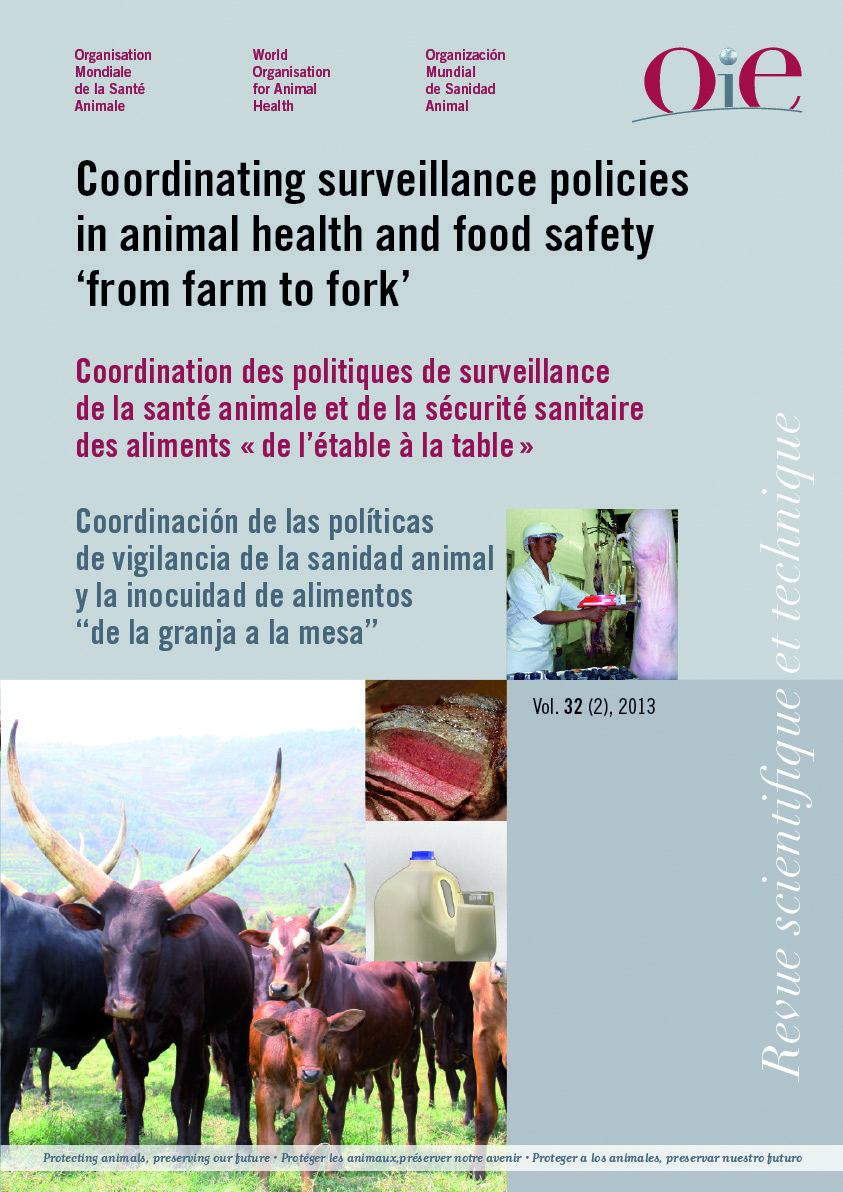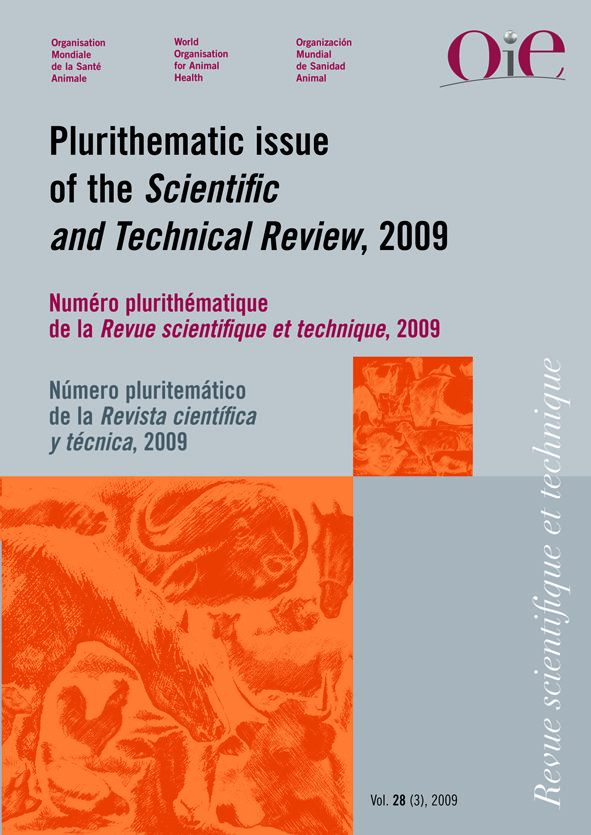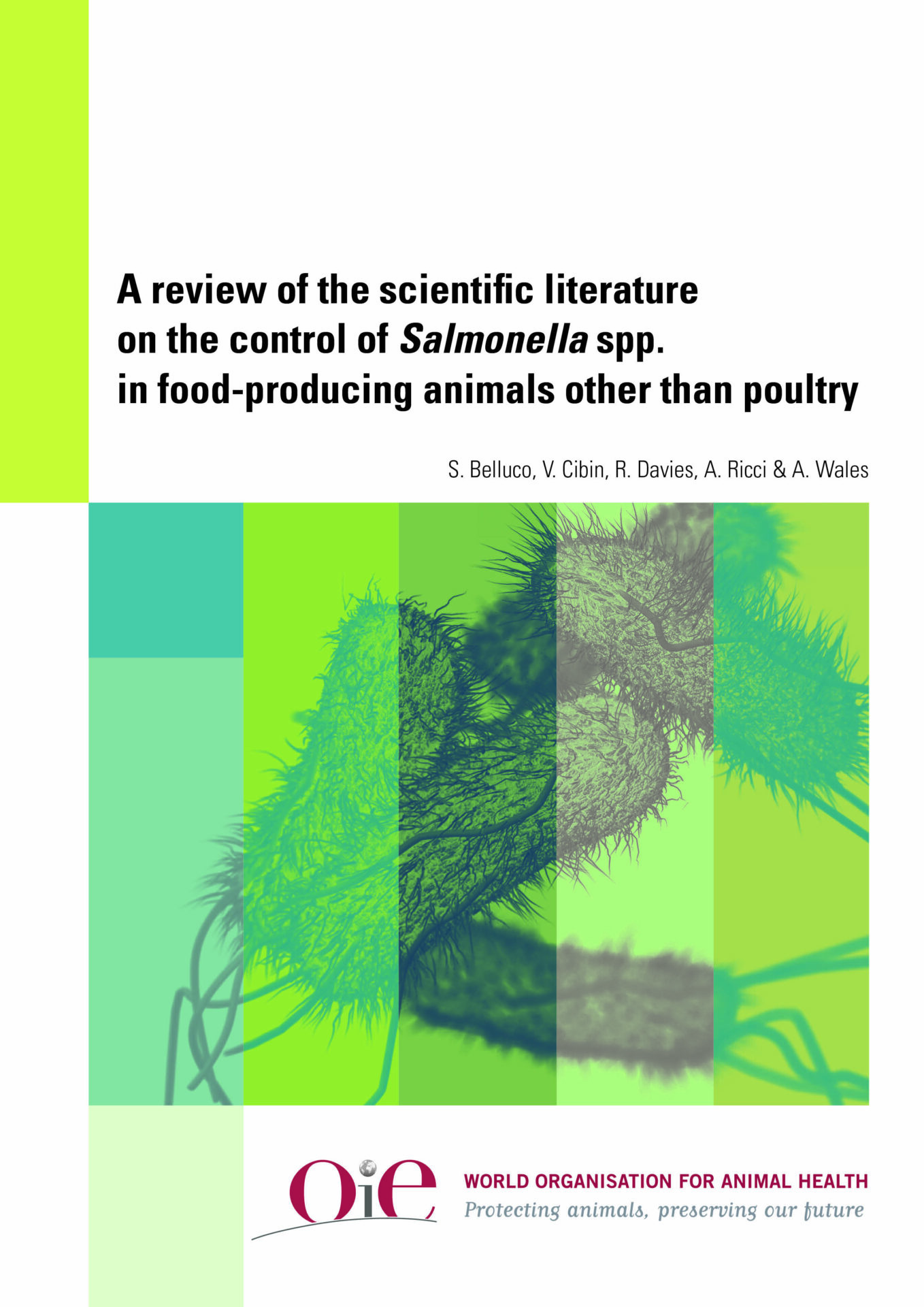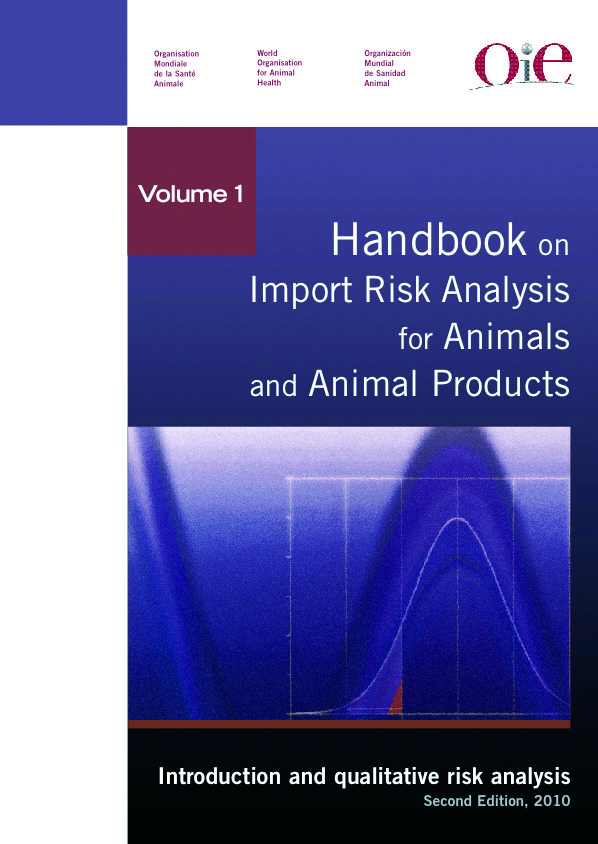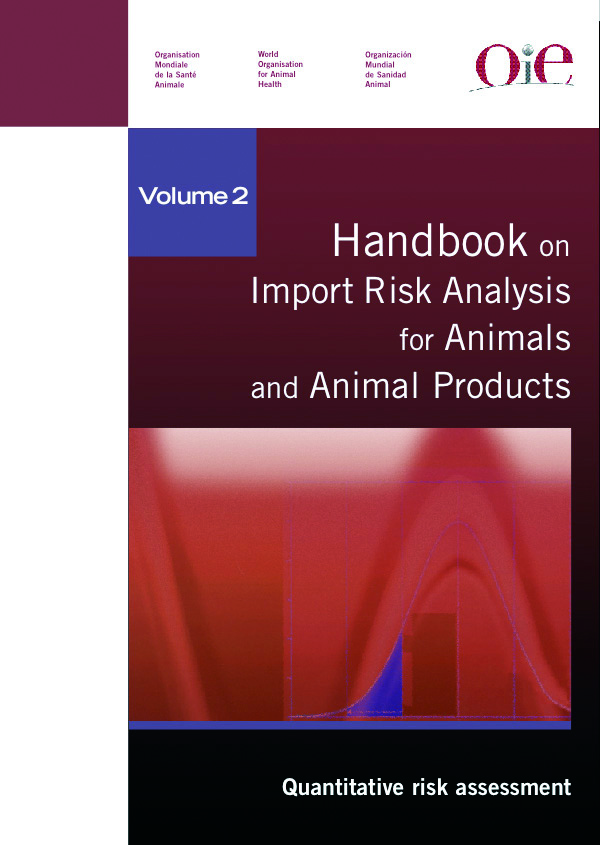Food Safety
Unsafe food containing harmful bacteria, viruses, parasites or chemical substances, causes more than 200 diseases. Diarrhoeal diseases are the most common illnesses resulting from the consumption of contaminated food, causing 550 million people to fall ill and 230 000 deaths every year. According to the World Health Organization (WHO), every year about 600 million – almost 1 in 10 people in the world – fall ill after eating contaminated food; and more than 400,000 die every year because of food borne diseases.

Given that the contamination of food may occur at any stage in the process from food production to consumption (“farm to fork”), food safety is best assured by an integrated, multidisciplinary approach that considers the entire food chain. A food safety system should take into account the complexity of food production, the globalisation of the food supply and should be risk-based. Hazards and potential risks should be considered at each stage of the food chain, i.e. primary production, transport, processing, storage and distribution, in order ensure that appropriate risk mitigation measures are in place.
Foodborne illnesses are usually infectious or toxic in nature and caused by bacteria, viruses, parasites or chemical substances entering the body through contaminated food or water. Sources of foodborne illness can be products of animal origin, fresh fruits and vegetables or contaminated drinking water
Bacteria such as Salmonella, Campylobacter, and Escherichia coli are among the most common foodborne pathogens that affect millions of people annually – sometimes with severe and fatal outcomes. Examples of foods involved in outbreaks of salmonellosis are eggs, poultry and other products of animal origin. Foodborne cases with Campylobacter are mainly caused by raw milk, raw or undercooked poultry and drinking water. Escherichia coli is associated with unpasteurised milk, undercooked meat and fresh fruits and vegetables. However parasites (e.g. tapeworms like Echinococcus spp, or Taenia solium), viruses (e.g. Norovirus infections) and chemical hazards such as veterinary drug residues and chemicals (e.g. dioxins) or environmental pollutants (heavy metals) can also be the source of FBD.
Ensuring food safety from farm to fork
To minimise risks of food contamination, action is needed at all stages of the food chain from production at the farm through to human consumption, i.e. ‘from farm to fork’.
The prevention, detection and control of many foodborne hazards of animal origin at the primary production phase is important in order to reduce the burden of disease in the animal and the risk of human illness through foodborne contamination as well as human infections resulting from direct or indirect contact with infected animals
Veterinarians carry out a wide range of activities in animal production systems that contribute to ensuring the production of safe food.
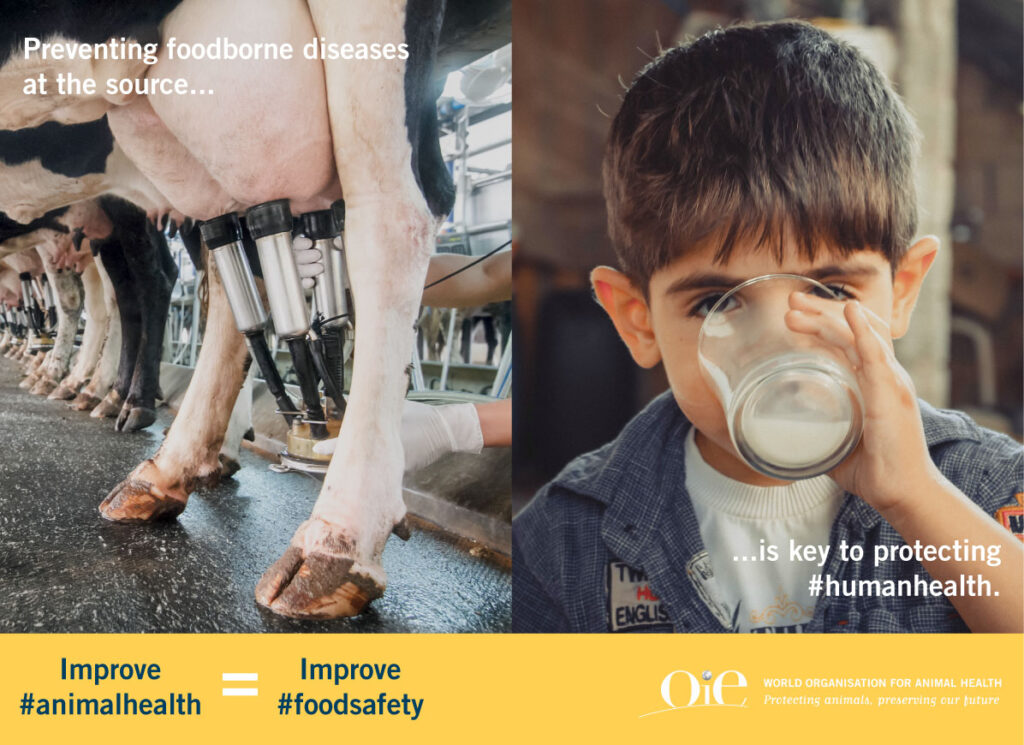
Examples of pathogens and diseases that originate in animals at the start of the food chain include:
Salmonellosis
One of the most common foodborne bacterial diseases in the world, salmonellosis, is caused by certain Salmonella species, which are normally present in the intestine of animals.
Humans can become infected following the consumption of uncooked contaminated food, in particular eggs, poultry, bovine and pork meat.
Reducing the prevalence of nontyphoidal Salmonella species in animals and good hygienic practices in food handling are important strategies to prevent foodborne disease in humans.
The World Organisation for Animal Health (WOAH)Terrestrial Code details prevention and control measures for Salmonellosis in poultry, bovine and pig production systems:
- Prevention, detection and control of Salmonella in poultry
- Prevention and control of Salmonella in commercial bovine production systems
- Prevention and control of Salmonella in commercial pig production systems
Trichinellosis
Trichinellosis is caused by eating raw or undercooked meat of animals infected with the larvae of a species of worm called Trichinella. Infection occurs commonly in certain wild carnivorous (meat-eating) animals such as bears, or omnivorous animals such as domestic pigs or wild boar. The importance of trichinellosis lies exclusively in the risk posed to humans which can be a debilitating disease and may result in death.
Trichinellosis affects an estimated ten thousand human cases worldwide, per year. Once widespread in domestic pigs, the disease has been controlled in many countries by banning the feeding of raw swill to pigs, and good biosecurity on farms such as vermin control. The application of meat inspection methods for detecting Trichinella has also proved to be an effective method of ensuring the production of safe meat for human consumption.
Bovine Tuberculosis
Caused by Mycobacterium bovis, this disease of cattle and other animal species can affect humans and cause up to 10% of human tuberculosis cases in some countries.In humans the disease is known as zoonotic tuberculosis.
Foodborne transmission occurs by drinking raw milk or consuming unpasteurised dairy products from infected cattle.
The widespread adoption of pasteurisation of milk to a temperature sufficient to kill the bacteria is key to preventing human transmission, particularly since early detection of infected animals in dairy cattle be challenging.
More information on Bovine tuberculosis.
Building efficient food safety systems worldwide
In this era of globalisation, food production chains have grown longer and more complex, often involving multiple enterprises or even countries for the manufacturing of one product. International standardisation of food production procedures and safety measures is therefore necessary for the safe trade of food products.
While the Veterinary Services are responsible for controlling pathogens in animals, they need to work with the numerous other stakeholders involved in food systems, such as feed producers, farmers, processors, wholesalers, distributors, importers, exporters and retailers.
In addition to developing international standards for food safety, the WOAH collaborates with other international organisations to ensure that the whole food production chain is appropriately regulated.
Veterinary Authorities or other Competent Authorities are responsible for developing policies, legislation and regulations relevant to food safety thereby contributing to ensuring the safety of food of animal origin. Depending on the national structure of food safety systems, the responsibilities of the Veterinary Authority may be limited to the first part of the food chain dealing with live animals, while in other cases the Veterinary Authority may be responsible for the whole food chain. Veterinarians are trained in both animal health and veterinary public health (including foodborne zoonoses and meat hygiene). These competencies allow them to play a central role in ensuring food safety, especially concerning food of animal origin. According to the local context, food safety activities may also involve veterinary paraprofessionals working under the supervision of veterinarians.
Generally, Veterinary Services contribute to the following steps of the food chain to help to reduce risks to animal health and public health. They may conduct inspections on-farm and in slaughterhouses, where they carry out ante-mortem and post-mortem inspections, to verify the health of the animals and the wholesomeness of the animal products, in accordance with WOAH standards:
On farm
Through their presence on farms and collaboration with farmers, veterinarians play a key role in ensuring that animals are healthy and kept under good sanitary and hygienic conditions.
Prevention and control of animal diseases
Veterinary Services play an important role in surveillance, early detection and treatment of diseases in animals – in order to minimise foodborne pathogens from entering the food chain.
Veterinary Services also play a central role in ensuring the responsible and prudent use of veterinary medicinal products, including antimicrobial agents. This helps to minimise the likelihood of non-compliance regarding veterinary drug residues in food of animal origin and the development of antimicrobial resistance.
Traceability
The traceability of animals and animal products throughout the food production chain is crucial in the management of disease outbreaks and food safety incidents. Animal identification and traceability should be under the responsibility of the Veterinary Authority.
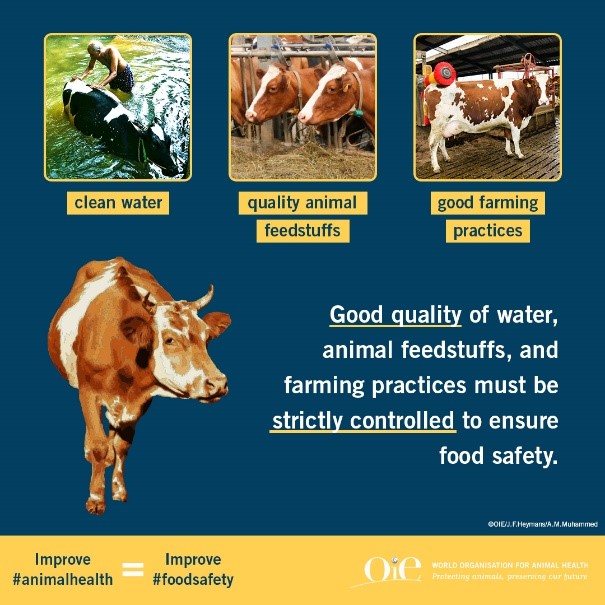
Slaughter, processing and distribution
In slaughterhouses
Veterinary Services play an important role in oversight of slaughterhouse activities to minimise foodborne risks to public health. Specially trained veterinarians oversee ante- and post-mortem meat inspections with the objective of controlling or reducing biological hazards of animal and public health importance; that is, they supervise the examination of both live animals and their carcasses to manage associated risks.
Processing and distribution
Veterinary Services may also be involved in oversight of control measures during processing and distribution of food of animal origin. They may also contribute in increasing the awareness of food producers, processors, and distributors in addressing animal production food safety.
Crossing borders: The Veterinary Services’ key role in securing international trade
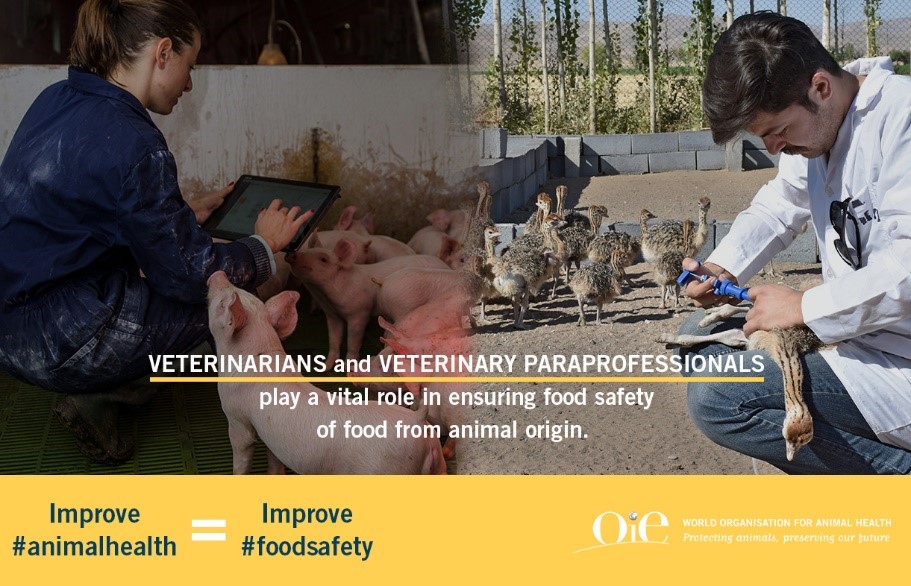
Veterinary Services play an important role in ensuring safe international trade of live animals and animal products based on international Standards. Veterinary Authorities certify that food of animal origin complies with animal health and food safety requirements. WOAH Terrestrial Code provides models of veterinary certificates for international trade in live animals, hatching eggs and products of animal origin.
Other Competent Authorities may also be involved in providing assurances and certification of food of animal origin (for example, pasteurisation of milk products) for international trade.
Standards
- The role of the Veterinary Services in food safety systems
- Control of biological hazards of animal health and public health importance through ante- and post-mortem meat inspection
- General principles on identification and traceability of live animals
- Design and implementation of identification systems to achieve animal traceability
- Antimicrobial resistance
The World Organisation for Animal Health (WOAH) provides guidance to its Members to assist them in meeting food safety objectives through different activities.
International standards
Adopted by all 182 Member Countries, international Standards serve as a basis for setting national legislation and ensuring improvements of terrestrial animal health and welfare and veterinary public health worldwide. Standards that address foodborne pathogenic agents of animal origin focus on eliminating hazards arising prior to the slaughter of animals or the primary processing of their products. They also address the role of Veterinary Services in food safety systems, and the links between food production, processing, and distribution.
The relationship between WOAH and the Codex Alimentarius Commission (Codex) is particularly important when developing international standards because risks to human health and food safety may arise at the farm and any subsequent stage in the food production continuum. WOAH and Codex collaborate closely in the development of their respective standards relevant to the whole food production continuum, taking care to avoid gaps and contradictions.
From 2002 until 2017, the Animal Production Food Safety Working Group guided WOAH’s work programme in animal production food safety. The group, composed of high-level experts from the Food and Agricultural Organization (FAO), the World Health Organization (WHO) and Codex, as well as internationally recognised experts in animal production food safety from around the globe, also contributed to create a strong working relationship between WOAH and the Codex Alimentarius.
At the 85th WOAH General Session, in May 2017, WOAH World Assembly of Delegates agreed to disband the Animal Production Food Safety Working Group noting that its mandate had been fulfilled and that activities concerning animal production food safety were now well integrated into WOAH activities. WOAH will pursue its work in this area through the ongoing work of the Terrestrial Code Commission, through other fora, for example as part of the annual FAO-WOAH-WHO Tripartite, and the participation in Codex fora in relation to the development of standards related to animal production food safety.
Monitoring animal diseases worldwide
Veterinary Services play a key role in the investigation of, and response to, foodborne disease outbreaks which may be attributable to or involve animal products, including the implementation of control measures. This work should be carried out in close collaboration with public health professionals, analysts, epidemiologists, food producers, processors and traders and any others involved.
In order to support them in these tasks, WOAH publishes disease alerts notified by its Members, to provide transparency on the animal health situation, in a platform called , the World Animal Health Information System (WAHIS). This activity is key to enable better preparedness in countries, and to improve trust between countries within international trade.
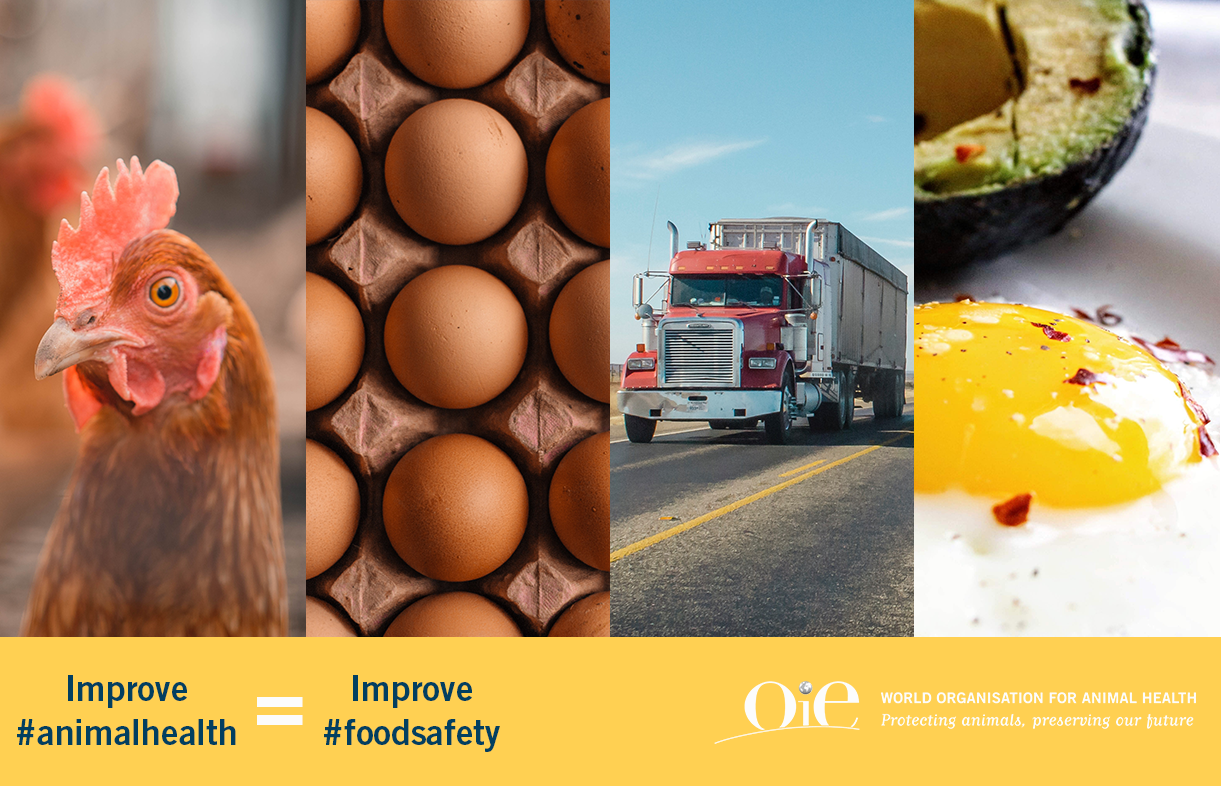
Because of the global nature of the food trade, Veterinary Authorities should work with other national agencies in reporting to international emergency foodborne disease networks, such as the WHO International Network of Food Safety Authorities (INFOSAN).
Creating strong international and regional networks
The expertise of WOAH is largely dependent on its network of Reference Laboratories and Collaborating Centres. There are currently several Centres on food safety as well as on foodborne parasites. Their role is to provide WOAH with the latest scientific information on these topics and to share their expertise with WOAH members when relevant.
To better focus on the topic of animal production food safety within countries, WOAH Delegates from each of WOAH Members appoint a dedicated Focal Point for this topic. These Focal Points usually work in the Veterinary Authority and are encouraged to actively participate in the WOAH standard setting process for work related to animal production food safety, as well as their implementation in their countries.
Standards
- The role of the Veterinary Services in food safety systems
- Control of biological hazards of animal health and public health importance through ante- and post-mortem meat inspection
- General principles on identification and traceability of live animals
- Design and implementation of identification systems to achieve animal traceability
Past reports of WOAH Working Group on Animal Production Food Safety
The protection of consumers worldwide requires Competent Authorities responsible for animal health, food safety and public health to collaborate at global, regional and national levels, in line with the One Health approach.
Food safety is a public health concern for the members of the Tripartite – WOAH, FAO and WHO. Their collaboration on the subject of food safety includes the establishment of mechanisms to ensure collaboration between WOAH and Codex.
Harmonising international standards on Food safety
The relationship between WOAH and the Codex is particularly important because risks to human health and food safety may arise at the farm and any subsequent stage in the food production continuum. Consequently, risk management must be tailored to detect and address risks at the appropriate stage(s).
WOAH and Codex collaborate closely in the development of their respective standards relevant to the whole food production continuum, taking care to avoid gaps and contradictions. WOAH Members strongly support this collaboration:
- WOAH is responsible for setting standards in the domains of animal health and veterinary public health, including animal production food safety, to manage risks arising from the farm level through to primary processing.
- The Codex sets standards from primary processing through to consumption.
- Both the WOAH and the Codex Alimentarius are recognised as international standard setting organisations under the World Trade Organization (WTO) Agreement on the Application of Sanitary and Phytosanitary Measures (SPS Agreement).
WOAH Partners on Food safety
Learn more and help spread the word about the importance of controlling pathogens at their animal source with the tools below.
Social Media Tools
WOAH has developed key messages, emphasised by visuals, to raise awareness on animal production food safety. Intended to highlight the important role of the Veterinary Services on animal production food safety, these could be shared on various social media platforms to reach out to various stakeholders.
Download the social media cards here
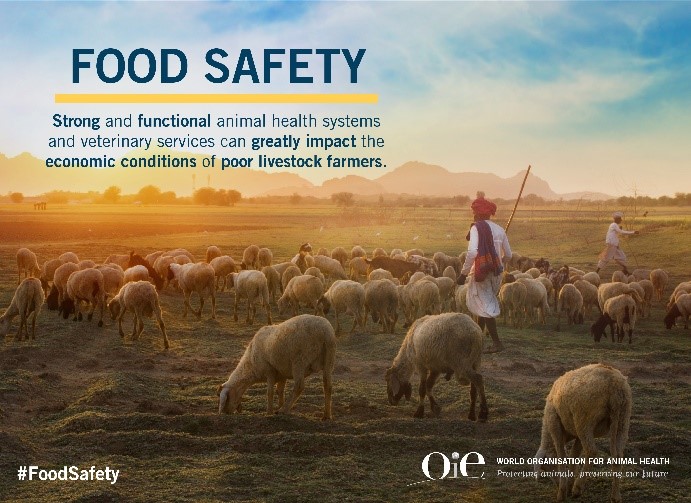
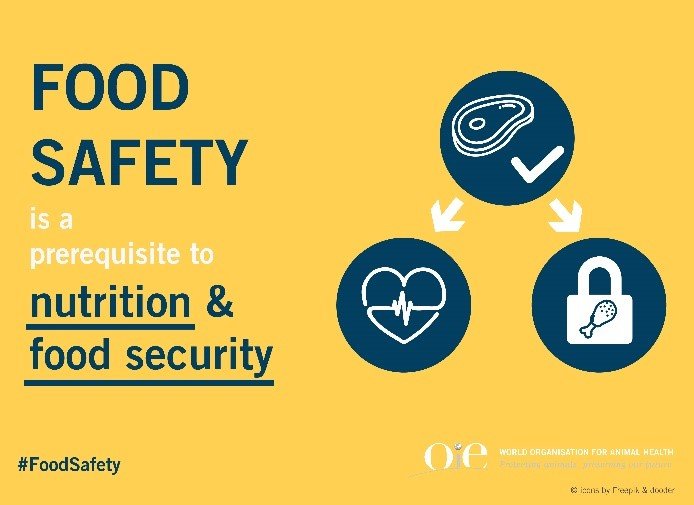
World Food Safety Day
June 7th has been declared World Food Safety Day by the United Nations. This initiative is a response to the need of addressing the global burdens of foodborne diseases. It is an opportunity to communicate on the importance of food safety and the collaboration necessary to ensure that safe food is accessible to communities worldwide.
Publications
Press releases
- 01/08/2018 G20 Agriculture Ministers support the implementation of WOAH Standards to achieve a sustainable food future
- 07/04/2015 Food safety, inseparable from strong and efficient animal health systems
- 23/05/2011 Shortage in number of veterinarians is a major constraint to world food security and safety
- 24/05/2010 Private agri-food industry expresses its views on public and private standards


